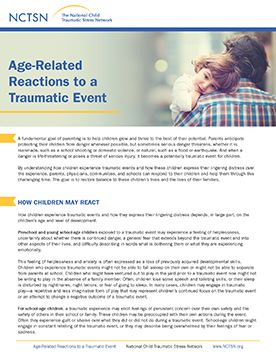
Age-Related Reactions to a Traumatic Event
Describes how young children, school-age children, and adolescents react to traumatic events and offers suggestions on how parents and caregivers can help and support them.
January was first declared as National Slavery and Human Trafficking Prevention Month in 2010. Since then, January has been a time to acknowledge those experiencing enslavement and those who have escaped. Although slavery is commonly thought to be a thing of the past, human traffickers generate hundreds of billions of dollars in profits by trapping millions of people in horrific situations around the world, including here in the U.S. Traffickers use violence, threats, deception, debt bondage, and other manipulative tactics to force people to engage in commercial sex or to provide labor or services against their will.
In recognition of this important topic, the NCTSN has compiled a list of resources for children, teens, parents and caregivers, educators, child welfare and juvenile justice professionals, and mental health providers.

Describes how young children, school-age children, and adolescents react to traumatic events and offers suggestions on how parents and caregivers can help and support them.

Offers a list of screening tools for identifying youth at risk for sex trafficking.
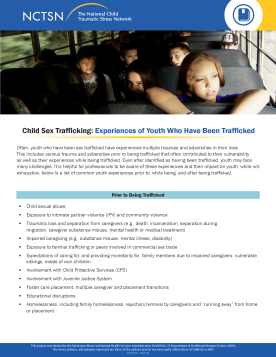
Offers information about the experiences of youth who have been trafficked. This fact sheet provides lists of experiences that youth may have endured prior to being trafficked, while being trafficked, and/or after being trafficked.
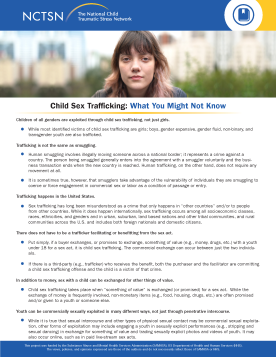
Provides a list of common misconceptions about child sex trafficking and uses facts to address those misconceptions.
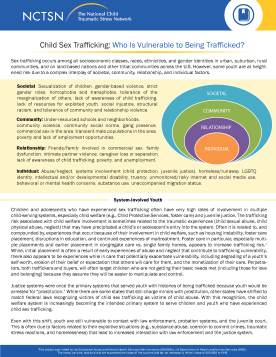
Discusses the complex interplay of societal, community, relationship, and individual factors that increase a youth's risk of being trafficked. This fact sheet offers information about youth whose experiences make them more vulnerable to being trafficked.
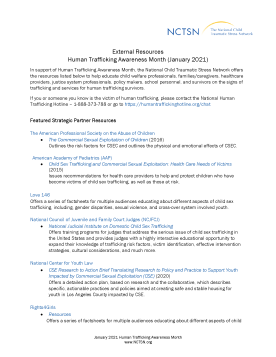
Provides external resources related to National Slavery and Human Trafficking Awareness Month.
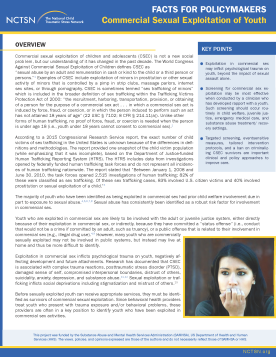
Discusses a study comparing a clinical CSEC cohort with a clinical group of youth who had no reported involvement in prostitution, but had a history of sexual abuse/assault. Updated May 2021.
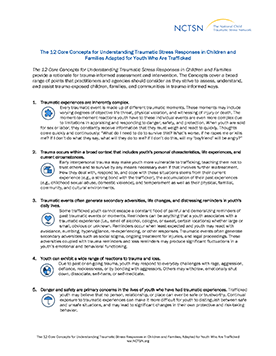
Outlines and describes a range of points that practitioners and agencies should consider as they strive to assess, understand, and assist youth who are trafficked.
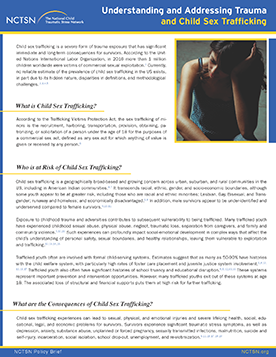
Provides policymakers and other stakeholders with an overview of child sex trafficking and its relationship to child trauma, as well as policy-relevant and child trauma-focused recommendations to assist them in their response to child sex trafficking. Updated March 2021.
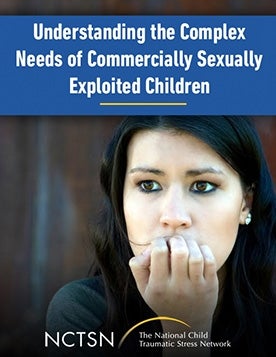
Explores the common reasons CSEC youth seek care, as well as challenges to victim identification.
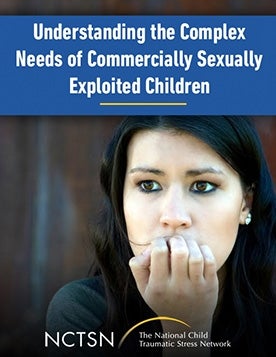
Presents the current status of mental health assessment, intervention and prevention for commercially sexually exploited youth, and future steps for improving mental health services for this population.
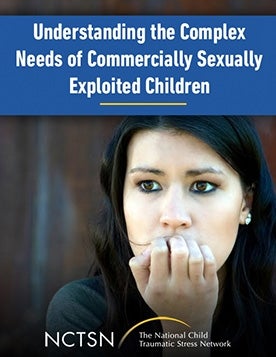
Tackles the specific strategies and challenges within each child serving system providing services to commercially sexually exploited children.